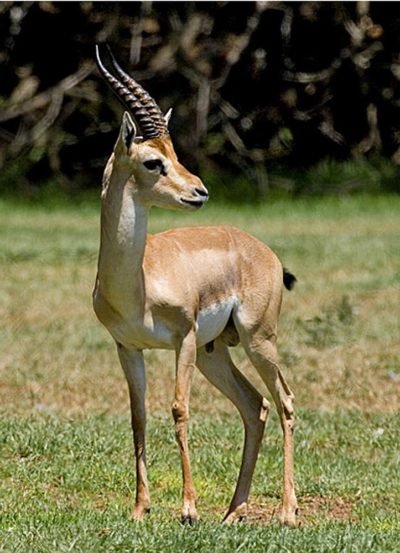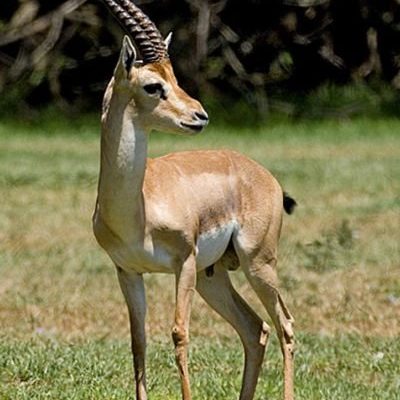
You might be wondering why these misconceptions exist in the first place. Much like how people might think a swan is always serene, gazelles are often oversimplified in popular culture. So, let’s dive into a world of gentle beauty and remarkable survival and explore the most common myths surrounding these incredible animals.
Myth 1: Gazelles Are Just Fast Antelopes
While it’s true that gazelles belong to the antelope family, think of them more as a specialized group with unique traits. They’re not just fast; they have incredible adaptations that help them survive in tough environments. Gazelles can sprint at speeds up to 60 kilometers per hour (37 mph), but that’s not the only impressive thing about them.
Here’s something fun: gazelles have a unique way of surviving harsh conditions. They can go for long periods without drinking water—thanks to their ability to get moisture from the plants they eat. So, while their speed is one part of the story, it’s *not* the entire tale. They’re like the ultimate endurance athletes of the animal kingdom, perfectly suited to life in the grasslands and deserts.
Their Unique Adaptations
You might be curious about how gazelles stay so fit and fast. Well, their bodies are built for speed, but they also have other incredible adaptations. For instance, they have long, slender legs and lightweight bodies which allow them to execute quick turns and bursts of speed when evading predators.
In addition, their keen eyesight is a game-changer. Gazelles can spot predators from afar. This extra sense gives them a head start when it comes to escaping danger. It’s like having a sixth sense that alerts them to any lurking threats, making them masters of survival.
Myth 2: All Gazelles Are the Same
Another common misconception is that all gazelles are one and the same. Actually, there are several species of gazelles, each with its own unique characteristics. You might have heard of names like the Thompson’s gazelle or the Grant’s gazelle—these two are among the most well-known, but they are distinct in their own ways.
The Thompson’s gazelle, for instance, is smaller and has a more agile build compared to the Grant’s gazelle, which is larger and has a stockier frame. They also inhabit different regions and environments—so it’s essential to recognize them for their unique lifestyles and behaviors.
Understanding Gazelle Diversity
Imagine gazelles as a family, each member with its own quirks and talents. Some might be faster, others more adaptable. For example, some species prefer open grasslands, while others are found in more arid regions. This diversity helps them thrive in various climates and ecosystems, proving that gazelles are not just one-size-fits-all.
Each species has its role in the ecosystem, too. They help maintain the balance of the grasslands by grazing on vegetation. This grazing keeps the habitat healthy, preventing overgrowth and encouraging new plant growth. So, when you think of gazelles, remember they’re not just fast animals—they’re vital contributors to their environment.
Myth 3: Gazelles Are Always Alone
You might picture a lone gazelle gracefully bounding through the fields, but the truth is, gazelles are social animals. Many species live in groups called herds, which can vary in size from a few individuals to hundreds. Herd life is important for their survival, as it helps them stay vigilant against predators.
Being part of a herd also aids in mating and raising young. Young gazelles learn essential survival skills from adults while benefiting from group protection. Just like how friends look out for each other, gazelles do the same with their herdmates.
The Benefits of Herd Living
What does it mean to be part of a gazelle herd? One major benefit is increased safety. When gazelles stick together, it’s tougher for predators like lions or cheetahs to pick them off. They also communicate with one another through various vocalizations and body language, which helps in alerting the group to danger.
Additionally, herd living promotes social interactions. Young gazelles play and learn with their peers, developing skills essential for their future survival. Think of it as a gazelle school—an informal setting where they grow and thrive together.
Myth 4: Gazelles Are Not Intelligent
Oh, the idea that gazelles are just pretty faces! In reality, these animals are quite intelligent. They have learned to navigate complex social structures and adapt to their surroundings. Gazelles can remember the locations of watering holes and food sources, which is vital for survival, especially in arid habitats.
Moreover, their ability to identify threats and communicate with others in their group shows a level of intelligence that often goes unnoticed. Gazelles can assess situations quickly and make decisions that enhance their chances of survival.
Cognitive Skills in Action
Here’s the thing: gazelles exhibit remarkable problem-solving skills. For example, if they encounter a predator, they don’t just scatter randomly. They often move in a coordinated manner, which helps to confuse the threat. This strategic thinking is a sign of their adaptable intelligence, allowing them to thrive even in perilous situations.
Their social interactions also imply a level of emotional intelligence. Gazelles form bonds with each other, displaying behaviors that indicate they recognize individual relationships. So, while they may seem like simple animals, gazelles are actually quite complex.
Myth 5: Gazelles Can’t Survive in Captivity
Many people think that gazelles are solely wild animals that can’t adapt to captivity, but this isn’t entirely true. While they thrive in their natural habitat, gazelles can live in well-maintained zoos or reserves where their needs are met.
In captivity, they often receive proper care, including balanced diets, veterinary health checks, and enriched environments that mimic their natural habitats. Various conservation programs also aim to breed and protect gazelles, playing a critical role in preserving their species.
Role of Conservation Efforts
Conservationists work hard to ensure that gazelles have a secure future. Efforts include breeding programs and habitat restoration projects that help maintain genetic diversity among populations. They understand that preserving these beautiful creatures requires a commitment to environmental stewardship and education.
So, while gazelles are undeniably best suited for wild settings, their adaptability and the dedicated work of conservationists prove that they can also thrive in captivity. It’s all about providing them with the right conditions to flourish.
Understanding gazelles requires looking beyond the myths and appreciating their unique characteristics. These graceful animals are not just fast movers; they are intelligent, social creatures with diverse adaptations and behaviors. Realizing the truth about gazelles helps us foster a deeper appreciation for them and emphasizes the importance of their conservation.
Next time you catch a glimpse of a gazelle, whether in a documentary or a zoo, remember that there’s a whole lot more to them than meets the eye. They’re not just symbols of speed; they’re intricate parts of our ecosystems, and it’s our responsibility to protect and cherish them. So let’s keep those misconceptions at bay and celebrate the true essence of gazelles!

